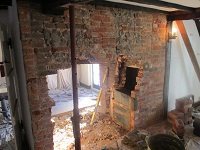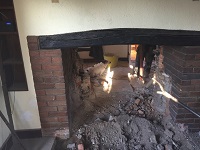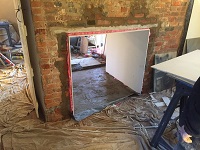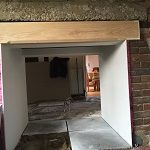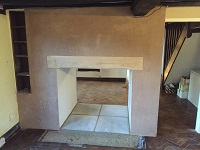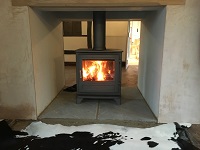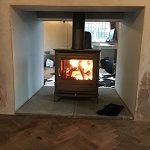We’re keen to show you an example of an installation we frequently carry out even though many home owners rarely consider this design initially. They see double woodburners in the pub or restaurant but don’t realise they can have one too.
We visit homes to advise on stove installations and we make suggestions to the owners. When we believe it’s the right design for them we suggest a double-sided woodburner which provides heat and focal points into two rooms or both sides of a larger area.
The Story
One chilly day we went to a lovely local home and discussed their new fire with the owners, who were delighted with the idea of a double-sided woodburner. They were also pleased to learn that we carry out all the building work ourselves, with no sub-contractors, so projects are kept to schedule and there are fewer people intruding on their privacy.
Here is a selection of before, during and after images showing the reconstruction of the fireplace and the installation of a Chesney Salisbury double-sided woodburner.
